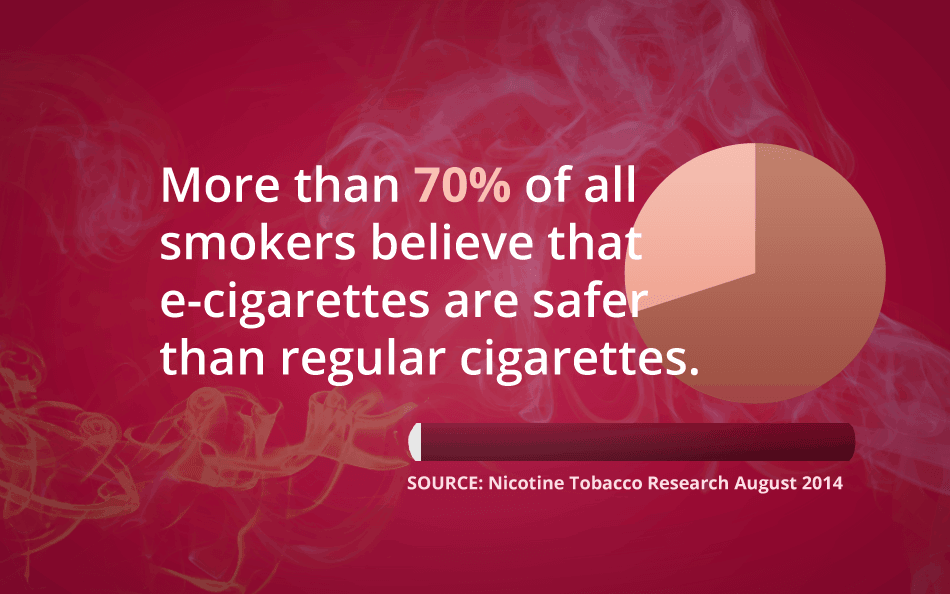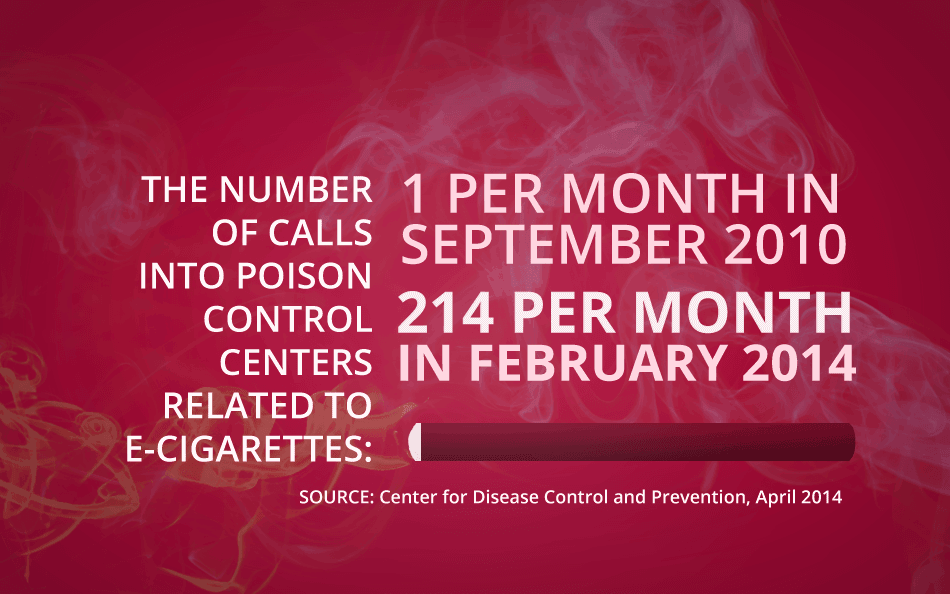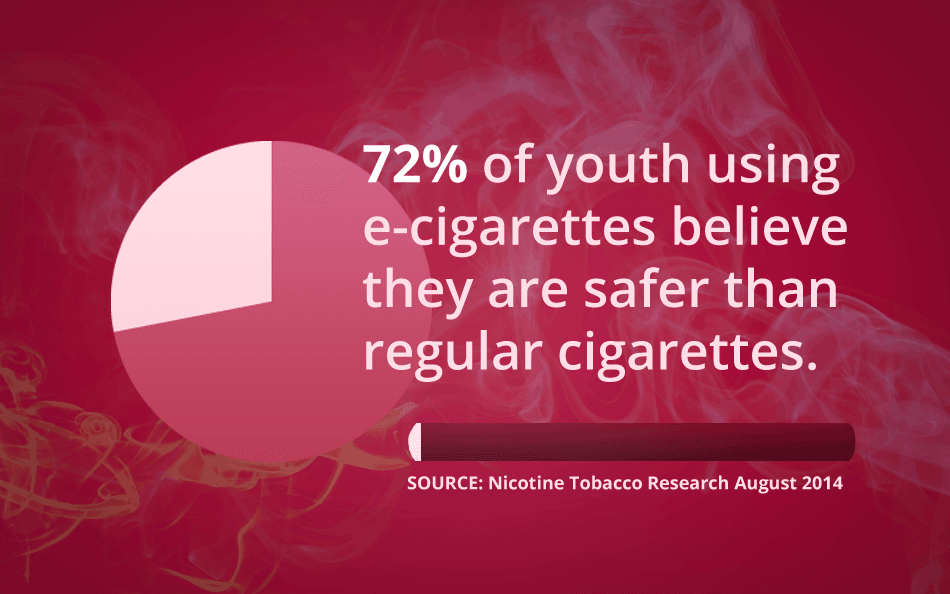They're devices that look like cigarettes. But instead of tobacco, they contain liquid nicotine. They operate off a battery and turn liquid nicotine into vapor that the smoker inhales.
They're called e-cigarettes, and manufacturers of e-cigarettes spend a lot of money to advertise them as better than traditional cigarettes.

Source: American Journal of Preventive Medicine April 2014
They call them a healthier alternative, a way to quit smoking. They even say that e-cigarettes don't produce second-hand smoke. But is any of that true?
1. E-Cigarettes Can Get Away With False Claims
Manufacturers are able to get away with making claims not backed by scientific evidence because most e-cigarettes are not currently regulated.
Only e-cigarettes marketed for therapeutic use are regulated by the FDA. Manufacturers can easily get around this regulation by marketing their products for other uses.
This means that the FDA is not reviewing the safety of these products, the truth of their claims, or the information on their labels.
At least with cigarettes, you know what you are risking. With the lack of regulation on e-cigarettes, you just can't be sure.
Measured nicotine levels can be significantly different from the amounts written on the labels of refills and cartridges, according to a February 2014 study published in Tobacco Control. The FDA even found that some e-cigarettes labeled nicotine-free actually do contain nicotine.
The FDA issued a proposal to start regulating e-cigarettes, but this hasn't happened yet.

Source: American Journal of Public Health, September 2012
2. They Still Contain Toxic Chemicals
Marketers of e-cigarettes boast that their products don't burn tobacco and so don't produce cancer-causing tar. While this is true, studies have found other cancer-causing or toxic chemicals in samples of e-cigarettes. They include:
- nitrosamines - Can increase the risk of cancer, says the National Cancer Institute.
- benzene - Known to cause cancer especially leukemia, says the American Cancer Society.
- formaldehyde - Found to be a probable carcinogen, according to the National Cancer Institute.
- acetaldehyde - Chronic overexposure leads to symptoms similar to alcoholism, says the Environmental Protection Agency.
- metals - Particles of chromium, tin, silver, iron, nickel, and aluminum were found in some e-cigarettes, according to a March 2013 study in PlosOne. Regular inhalation of these elements can lead to respiratory problems.
3. Cover Your Face Before Using E-Cigarettes
Chemicals in e-cigarettes vary greatly across brands and types. But one thing is consistent: Liquid nicotine is lethal if ingested, inhaled, or absorbed through the skin or eyes.
The safety precautions on some e-cigarette websites include a minimum recommendation for users to use chemical resistant gloves, coveralls, and shoe covers along with a faceshield, head cover and organic vapor respirator when handling 100 milligrams or more of liquid nicotine.
The safety recommendations may seem overkill until you consider that ingesting 60 milligrams of nicotine is enough to kill a 150-pound adult, according the US Centers for Disease Control and Prevention.
Does that sounds like something you want to have around the house, in your purse, or put in your body?
This is very alarming because e-cigarette vials can get as big as 100 milligrams.
4. A New Risk for Children and Youth
More than half of calls to Poison Control Centers referred to exposure of kids younger than 5 years old. Unfortunately, e-cigarette cartridges are not required to be childproofed. Additionally, they come in flavors that can look appealing to kids.

Source: Center for Disease Control and Prevention, April 2014
Another concern is e-cigarettes use among youth. More than 250,000 middle and high school students who never smoked used e-cigarettes, according to the Center for Disease Control and Prevention.

Source: Nicotine Tobacco Research August 2014
When young people believe e-cigarettes are safer, they are more likely to use them. It's clear that the unsubstantiated claims about e-cigarettes are working.
When you're talking to a young person about smoking, don't forget to mention that e-cigarettes may be just as bad. And if you're trying to quit smoking, leave the e-cigarettes on the shelf. An EIRMC physician can help you take a safer route to being smoke free.
$webqFacilityNumber
Need a Physician?